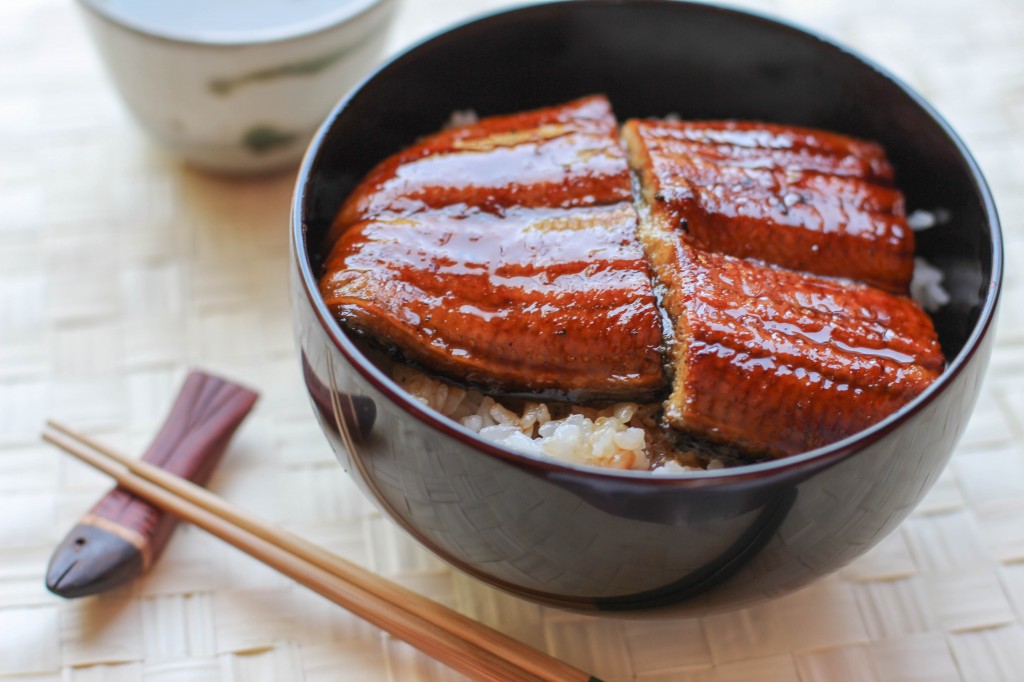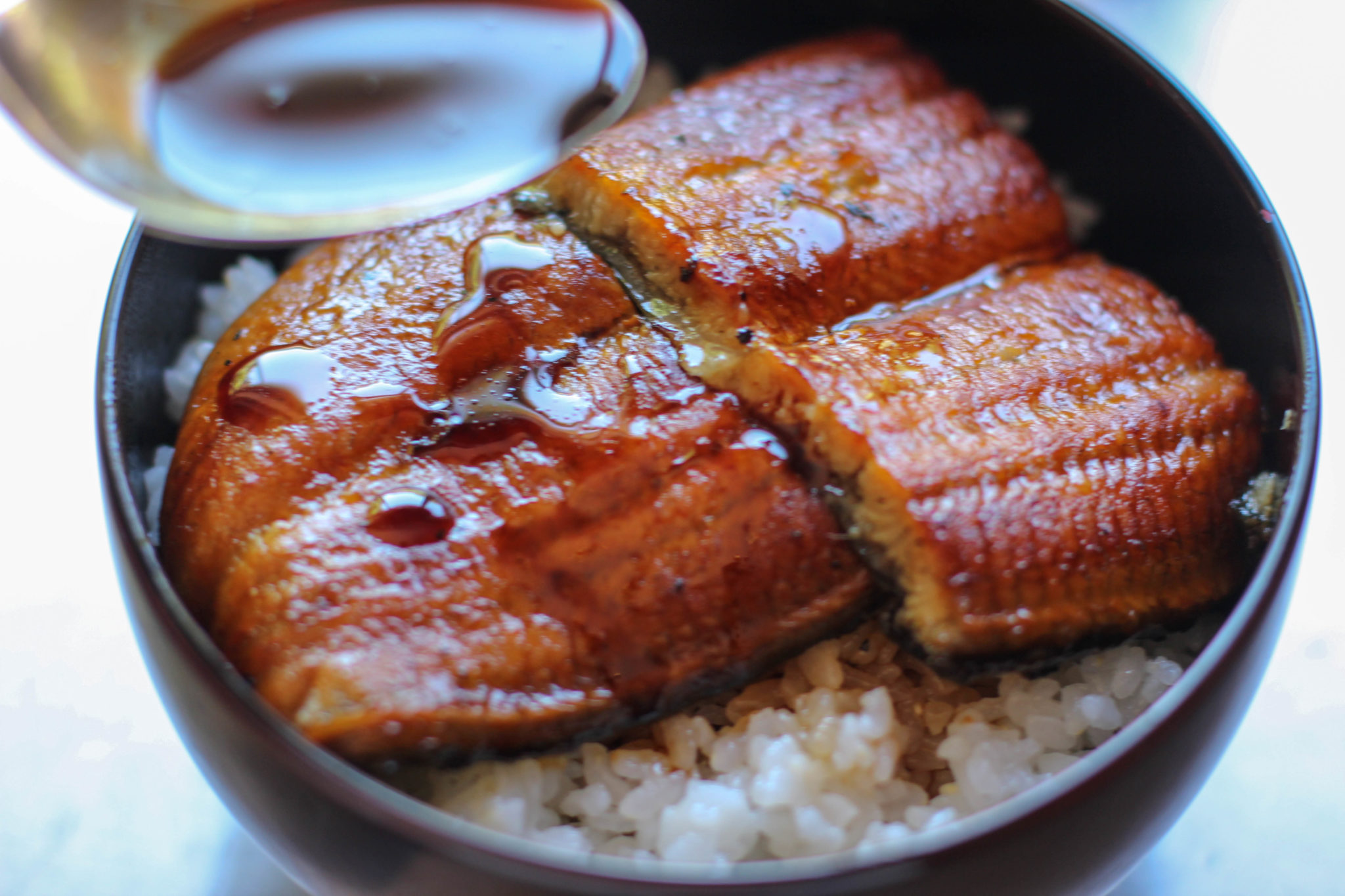Unagi don, a beloved Japanese dish, is a culinary masterpiece that tantalizes taste buds and captivates the senses. Originating in Japan, unagi don has become a staple of the nation’s cuisine, cherished for its exquisite flavors and cultural significance.
This versatile dish consists of succulent unagi, or freshwater eel, grilled or fried to perfection and glazed with a savory sauce. Served atop a bed of fluffy rice, unagi don is often garnished with scallions, nori, and a sprinkle of sansho pepper, creating a symphony of textures and flavors.
Introduction
Unagi don, also known as unadon, is a Japanese dish consisting of grilled eel served on top of a bowl of rice. The eel is typically seasoned with a sweet and savory teriyaki sauce, and the dish is often garnished with green onions, sesame seeds, and a sprinkle of powdered nori seaweed.Unagi
don is a popular dish in Japan, and it is often served as a special occasion meal. The dish is said to have originated in the Edo period (1603-1868), when it was a popular dish among the common people. Unagi don is now a staple of Japanese cuisine, and it can be found on the menu of most Japanese restaurants.
Origin
The origins of unagi don can be traced back to the Edo period (1603-1868). During this time, eel was a popular food among the common people, and it was often served on top of rice. The dish was originally called “unagi meshi,” and it was typically made with grilled eel that was seasoned with a simple soy sauce-based sauce.Over
time, unagi meshi evolved into unagi don, and the dish became increasingly popular. The addition of a sweet and savory teriyaki sauce to the eel made the dish more flavorful, and the addition of green onions, sesame seeds, and nori seaweed added a touch of elegance.Today,
unagi don is a staple of Japanese cuisine, and it is enjoyed by people of all ages. The dish is often served as a special occasion meal, and it is also a popular choice for take-out and delivery.
Ingredients

The fundamental components of unagi don contribute to its distinctive flavor profile and satisfying texture. Let’s delve into the essential ingredients and their significance:
Unagi (eel): The star of the show, unagi refers to freshwater eel, specifically Japanese eel or Anguilla japonica. Its rich, fatty flesh boasts a delicate yet robust flavor. Opt for high-quality unagi that has been properly cleaned and prepared, ensuring freshness and optimal taste.
Rice
The foundation of unagi don, rice serves as a bed for the savory eel. Japanese short-grain rice is the traditional choice, known for its sticky texture and ability to absorb the delectable sauce. Choose high-quality rice that has been properly cooked and seasoned with vinegar, sugar, and salt to enhance its flavor and texture.
Sauce
The unagi don sauce is a vital component, adding a distinctive sweet and savory glaze to the eel. It typically comprises soy sauce, mirin (sweet rice wine), sake (Japanese rice wine), and sugar. The sauce is simmered until it thickens and develops a rich, flavorful consistency.
Toppings
Unagi don is often adorned with various toppings that enhance its visual appeal and add extra flavors and textures. Common toppings include:
- Mitsuba (Japanese parsley): Fresh mitsuba leaves provide a vibrant green color and a subtle, herbaceous flavor.
- Nori (seaweed): Thinly sliced nori sheets add a salty, umami-rich note and a touch of crunch.
- Shichimi togarashi (Japanese seven-spice blend): A sprinkling of shichimi togarashi adds a subtle heat and a complex blend of flavors.
- Pickled ginger: Thinly sliced pickled ginger provides a refreshing contrast to the rich flavors of the unagi and sauce.
Cooking Methods

Preparing unagi don involves grilling or frying the unagi, preparing the sauce, and assembling the dish. Each method requires specific techniques and variations, resulting in different flavors and textures.
Grilling Unagi
Grilling unagi is a traditional method that imparts a smoky flavor and crispy texture. Start by brushing the unagi with soy sauce and mirin, then grill over high heat until the skin is crispy and the flesh is cooked through.
Frying Unagi
Frying unagi results in a more tender and juicy texture. Dip the unagi in a batter made with flour, cornstarch, and eggs, then fry in hot oil until golden brown and crispy. Drain on paper towels to remove excess oil.
Preparing the Sauce
The sauce for unagi don is a sweet and savory blend of soy sauce, mirin, sake, and sugar. Combine all ingredients in a saucepan and bring to a simmer. Reduce heat and simmer until the sauce has thickened and become slightly syrupy.
Assembling the Dish
To assemble unagi don, place a bowl of cooked rice in a serving bowl. Top with the grilled or fried unagi and drizzle with the prepared sauce. Garnish with sliced scallions or nori for added flavor and presentation.
Presentation and Serving
The traditional presentation of unagi don is a bowl of rice topped with grilled eel fillets. The eel is usually cut into bite-sized pieces and brushed with a sweet and savory sauce before grilling. The rice is often seasoned with vinegar and sugar, and may be garnished with shredded nori (seaweed) and/or pickled ginger.
Unagi don can be served with a variety of accompaniments and garnishes, including:
- Wasabi: A spicy green paste made from the root of the wasabi plant. Wasabi is often served on the side and added to taste.
- Pickled ginger: Thinly sliced ginger that has been pickled in vinegar and sugar. Pickled ginger is often served as a palate cleanser between bites of unagi don.
- Nori (seaweed): Dried seaweed that is often shredded and sprinkled over unagi don. Nori adds a salty and savory flavor to the dish.
- Green onions: Thinly sliced green onions add a fresh and pungent flavor to unagi don.
For a more creative presentation, you can try serving unagi don in a sushi bowl or on a bed of mixed greens. You can also drizzle the unagi with a spicy mayo sauce or top it with a fried egg.
Nutritional Value
Unagi don is a nutritious dish that provides a range of essential vitamins, minerals, and omega-3 fatty acids. Unagi, or freshwater eel, is a rich source of protein, containing all nine essential amino acids. It is also a good source of vitamin A, which is important for vision, immune function, and skin health.
Unagi is also a good source of vitamin B12, which is essential for red blood cell production and nerve function.
Calories and Macronutrients
A typical serving of unagi don contains approximately 400-500 calories, depending on the size of the serving and the ingredients used. The majority of the calories come from carbohydrates, followed by protein and fat. Unagi don is a relatively high-fat dish, but the majority of the fat is unsaturated, which is considered to be healthy.
Micronutrients
Unagi don is a good source of several micronutrients, including:
- Vitamin A: Unagi is a rich source of vitamin A, which is essential for vision, immune function, and skin health.
- Vitamin B12: Unagi is a good source of vitamin B12, which is essential for red blood cell production and nerve function.
- Iron: Unagi is a good source of iron, which is essential for carrying oxygen throughout the body.
- Calcium: Unagi is a good source of calcium, which is essential for strong bones and teeth.
- Potassium: Unagi is a good source of potassium, which is essential for regulating blood pressure and fluid balance.
Overall, unagi don is a nutritious dish that can be part of a healthy balanced diet. It is a good source of protein, vitamins, minerals, and omega-3 fatty acids.
Cultural Significance
Unagi don holds a significant place in Japanese culture, deeply rooted in history and tradition. The dish has long been associated with strength, virility, and prosperity.
Historical and Traditional Aspects
Unagi, or freshwater eel, has been a part of Japanese cuisine for centuries. During the Edo period (1603-1868), unagi don became a popular dish among commoners. It was often consumed during the summer months, as it was believed to help replenish energy and combat the heat.
Symbolism and Meaning
In Japanese culture, unagi is considered a symbol of strength and determination. The long, slender shape of the eel represents longevity and perseverance. Eating unagi don is believed to bring good luck, health, and prosperity.As a traditional dish, unagi don is often served on special occasions, such as New Year’s Day and Children’s Day.
It is also a popular choice for celebrations and festivals, where it is believed to bring good fortune and prosperity to the attendees.
Variations and Adaptations
Unagi don is a versatile dish that has inspired countless variations and adaptations around the world. From traditional Japanese interpretations to creative fusion dishes, the possibilities are endless.
In Japan, regional variations of unagi don include the Nagoya-style hitsumabushi, where the eel is grilled over charcoal and served with various toppings and condiments, and the Edo-style kabayaki don, which features a sweeter sauce and a more tender eel.
International Variations
Beyond Japan, unagi don has found its way into other cuisines, leading to innovative interpretations. In Korea, for example, unagi is often used in a dish called jangeo gui, where it is grilled and served with a spicy sauce.
In Southeast Asia, unagi is commonly incorporated into rice dishes such as nasi goreng and bee hoon. In the United States, unagi don has become a popular dish in sushi restaurants, often served with avocado and cucumber.
Modern Adaptations
Modern chefs have also experimented with creative ways to present and prepare unagi don. Some have created vegetarian versions using tofu or mushrooms as a substitute for the eel.
Others have incorporated unagi into fusion dishes, such as unagi tacos or unagi burgers. These adaptations showcase the versatility of the dish and its ability to blend seamlessly with other cuisines.
Conclusion
In summary, unagi don is a beloved dish that embodies the culinary traditions and cultural significance of Japan. Its tender, flavorful eel, paired with a sweet and savory sauce, served over fluffy rice, creates a harmonious and satisfying meal.
The popularity of unagi don extends beyond its borders, gaining recognition worldwide for its unique flavors and versatility. It can be enjoyed as a comforting meal, a celebratory dish, or a culinary adventure. Whether you savor it at a traditional Japanese restaurant or experiment with different variations, unagi don offers a delightful culinary experience that is sure to leave a lasting impression.
Final Conclusion
Unagi don is a culinary treasure that embodies the essence of Japanese cuisine. Its rich flavors, cultural significance, and versatility have made it a beloved dish worldwide. Whether enjoyed as a traditional delicacy or reimagined with modern twists, unagi don continues to captivate and delight food enthusiasts.
Common Queries
What is the origin of unagi don?
Unagi don originated in Japan during the Edo period (1603-1868), when street vendors began selling grilled eel over rice.
What are the key ingredients in unagi don?
The key ingredients in unagi don are unagi (eel), rice, sauce (usually a combination of soy sauce, mirin, and sake), and toppings (such as scallions, nori, and sansho pepper).
How is unagi don typically served?
Unagi don is typically served in a lacquered bowl, with the unagi placed atop a bed of rice and garnished with scallions, nori, and sansho pepper.
What are some variations of unagi don?
Variations of unagi don include hitsumabushi (a Nagoya dish where unagi is served with various condiments), unajyu (unagi served in a lacquered box), and unadonburi (unagi served on a bed of rice in a bowl).
